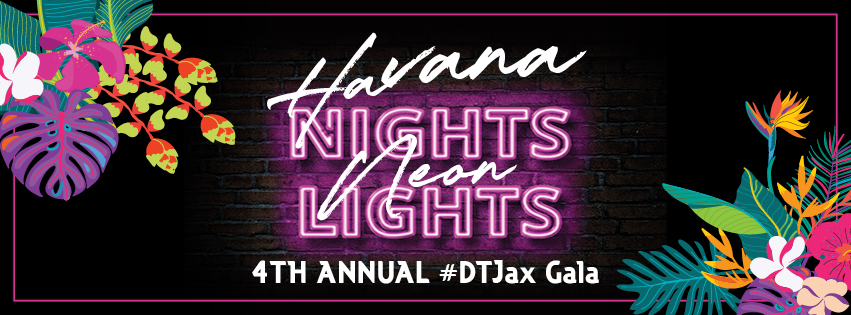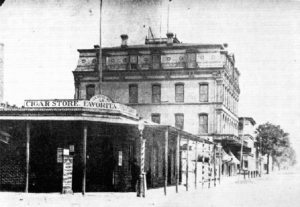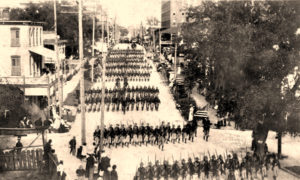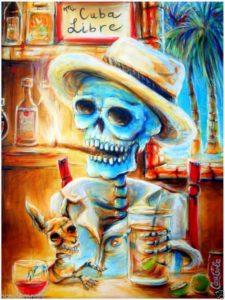With the 2019 #DTJax Gala: Havana Nights, Neon Lights! right around the corner, you might be wondering “why Havana, Cuba? What does that have to do with Jacksonville?” Well, here’s your answer, because #DTJax and Cuba go way back!
Cuban immigrants were rolling authentic Cuban cigars in Florida since the early 1830s. In 1867, the first Cuban cigar factory opened in Key West, but it wasn’t long after that cigar manufacturers began importing Havana tobacco to Jacksonville to process locally and distribute via the Jacksonville Union Terminal, which was the largest in the South upon its completion in 1919. In 1895 however, Jacksonville was playing host to 15 separate cigar factories and thousands of Cuban immigrants working to make millions of hand-rolled Cuban cigars annually. Most of these factories were located right on Bay Street, which originally ran directly parallel to the north bank of the St. Johns, in order to be as close to the shipping docks as possible.
Jacksonville’s cigar industry continued to grow steadily until 1924, when an amusing moment took place right in Downtown:
[I]n 1924, Mayor John Alsop noticed a chauffeured Cadillac with an Ohio license plate traveling through town. Seizing the opportunity, he jumped on the car’s running board, introduced himself to the car’s occupant and convinced him to stay overnight in town.
The occupant was cigar maker John Swisher. Swisher was the first cigar manufacturer to install cigar making machinery. Alsop, not only successfully convinced Swisher to bring his machinery to Jax, Swisher also decided to consolidate his 22 Ohio-based cigar factories into one large factory in Jacksonville. The building selected for his operation was a former World War I munitions factory in the New Springfield neighborhood. The large relocation also convinced a major Swisher supplier, the A.S. Ginter Box Company, to move to Jacksonville as well. Ginter’s new factory opened in 1924 across the street from Swisher’s.
Swisher was able to weather the Great Depression better than the many smaller factories in Jacksonville and was even partially responsible for the closing of many Tampa cigar factories, which couldn’t compete with the sheer volume of product the company released into the market. Though the company recently made the decision to relocate the manufacturing process to the Dominican Republic, Swisher’s headquarters and distribution center will be staying in Jacksonville, a current link to our storied cigar past.
Born and raised in Jacksonville, Napoleon Bonaparte Broward worked on the St. Johns and up and down the coast of New England before being appointed to Sheriff of Jacksonville in 1888 following the disgrace of the former Sheriff for a massive prison break. In 1894, he lost his appointment to a political rival and teamed with his brother and a mutual associate to build a steamboat, which they named the Three Friends. When open revolt against Spain occurred in Cuba, Jacksonville Cubans asked Broward if he would be willing to become a filibuster and smuggle munitions and individuals down to Cuba to aid in the revolt. He agreed, and made the run several more times, being chased by the U.S. Coast Guard who were tasked with stopping private citizens from disrupting the neutrality officials were trying to maintain, and the Spanish Armada, ordered by Alfonso XIII, King of Spain to sink the Three Friends on sight. In 1897, the Three Friends was seized by the United States government for carrying illegal cargo. Broward tried his best to argue an appeal, but the Supreme Court found that, while they could not prove who was responsible for the use of the Three Friends, as the circumstantial evidence of his ownership wasn’t enough to charge him or his associates directly, there was enough evidence to prove that it was used for smuggling, and the vessel and everything on it at the time of seizure was liquidated by the federal government.
After declaring war on Spain, the United States began a massive recruitment effort to invade Cuba and remove Spain from their own province. The U.S. was increasingly supportive of anti-colonial Monroe Doctrine, and the public and press were up in arms over the apparent naval mine attack by Spain on the U.S.S. Maine (ACR-1), moored in Havana Harbor. The U.S. Army was hoping to triple its forces from 25,000 to 75,000, but ended up with a surging influx of soldiers, in all totaling 220,000, about half of whom enlisted the day after the Maine was sunk. Subsequently, engineers have reported that it was most likely a coal fire that caused the explosive sinking and deaths of 250 U.S. Navy sailors onboard the U.S.S. Maine, but the snap judgments of civilians coupled with the issue of yellow journalism stoked the emotions of Americans calling for war against Spain.
Due to the massive influx of recruits serving in aid to Cuban efforts to overthrow their 400-year colonial rulers, the Army ran out of room for its forces in Tampa. It was decided to establish a secondary forward operating base just north of Downtown Jacksonville. Originally called “Camp Springfield,” the U.S. Army claimed 28 square blocks between Main and Ionia, 8th and 1st Streets.
 The base was renamed “Camp Cuba Libre” in response to the rallying cry of Americans who supported the Cuban liberation effort. Spanish for “Free Cuba!” Camp Cuba Libre was only operational for about three months, the entirety of the Spanish-American War. In August of 1898, Spain sued the United States for peace after sustaining dreadful defeats in both the Pacific and Caribbean theaters of operation. After two months of negotiations during a cessation of hostilities by both countries, both countries signed the Treaty of Paris, with Spain ceding control of the Philippines, Guam, and Puerto Rico to the U.S., as well as granting Cuba independence, though they immediately became a political protectorate of the United States. The tens of thousands of soldiers left packed up the camp and filled trains at Jacksonville Union Terminal, heading back to their hometowns, or down to Cuba to stabilize the region. The last soldier left Cuba Libre in January of 1899.
The base was renamed “Camp Cuba Libre” in response to the rallying cry of Americans who supported the Cuban liberation effort. Spanish for “Free Cuba!” Camp Cuba Libre was only operational for about three months, the entirety of the Spanish-American War. In August of 1898, Spain sued the United States for peace after sustaining dreadful defeats in both the Pacific and Caribbean theaters of operation. After two months of negotiations during a cessation of hostilities by both countries, both countries signed the Treaty of Paris, with Spain ceding control of the Philippines, Guam, and Puerto Rico to the U.S., as well as granting Cuba independence, though they immediately became a political protectorate of the United States. The tens of thousands of soldiers left packed up the camp and filled trains at Jacksonville Union Terminal, heading back to their hometowns, or down to Cuba to stabilize the region. The last soldier left Cuba Libre in January of 1899.
Cubano culture is still vibrant and present in Downtown today. On Wednesday, March 6th, 2019, The Justice Pub will be hosting the Cien Calaveras [100 Skulls] Cuban Art Show & Fundraiser, an imperative by the Amigo Tattoo Charity to raise funds for Cuban artists who face difficulties getting supplies due to economic challenges. 100 skull shapes were cut out of old skateboards from Amigo Skate and sent to participating artists around the United States to be turned into calavera art and sold at Justice Pub to benefit the charity fund.
So go check out Cien Calaveras while you’re at First Wednesday Art Walk March 6th and support a great cause!




